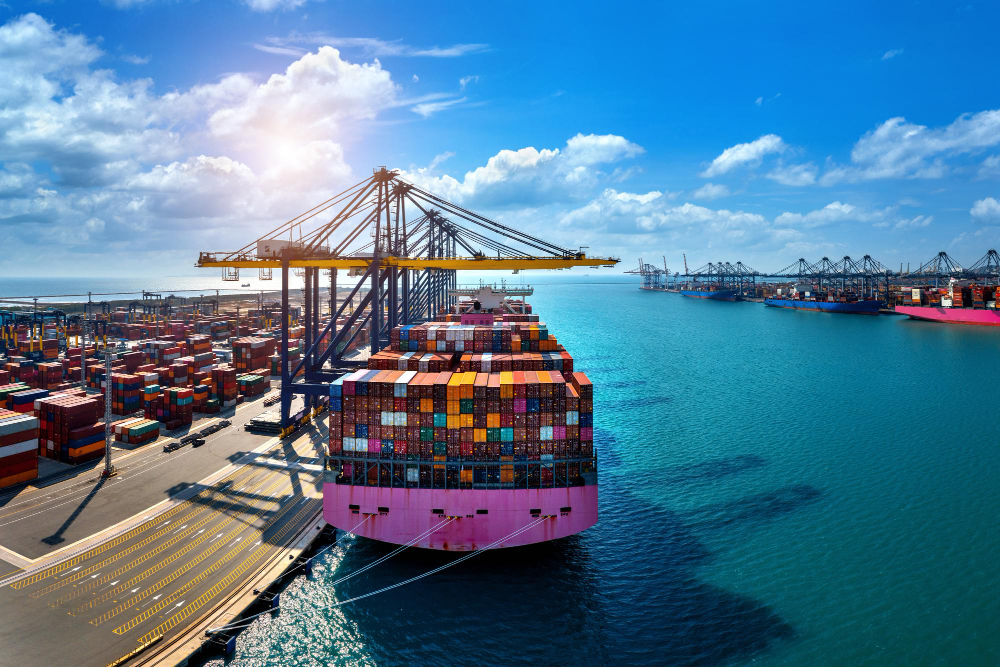The container shipping industry is experiencing extreme challenges and volatility since 2020 and with the gradual withdrawal of the pandemic restrictions in 2022 sea freight forwarders were expecting a semblance of market stability. Nevertheless, the situation unfolding is not very hopeful for the ocean freight industry. The sector is still having to contend with global disruption following the war in Ukraine, the lockdowns in Shanghai, the high fuel prices, and several other factors. This article will present a checklist of all the factors that might cause shipping delays in the rest of 2022.

Factors that will lead to delays in the container shipping industry
-
Renewed lockdowns because of the pandemic
The extended lockdown in Shanghai– the commercial capital of China as well as the site of the world’s largest port, has resulted in a supply chain disaster that is impacting almost every country around the world. Since mid-April, Yang Ming, ONE, and Hapag Lloyd cancelled over 36 voyages to Shanghai. The strict lockdown measures have also resulted in a shortage of 40-foot containers. Additionally, several carriers stopped accepting shipments of perishable and dangerous cargoes to Shanghai. This was primarily because of the lack of storage space for specialized containers at the Shanghai Port.
Although the terminals and ports were operating during the 2022 lockdowns, the mobility restrictions on the people impeded the port operations. This is because of a lack of manpower and the inability to haul the shipment to/from the port premises. The Yantian Port, for instance, suffered a volume decline of 43% during the lockdown. The shortage of truck drivers to move the shipments to/from the port premises and labour deficit in the ports were largely responsible for the delays and volume decline. Although the fading of Covid cases has somewhat eased the lockdown situation, it will still take some time for the situation to return to normalcy.
-
Disruptions because of equipment and space scarcity
One of the most important reasons behind the delays in the container shipping industry is the lack of equipment and space scarcity. Apart from leading to delays, the equipment and space shortage are also pushing up the shipping prices in certain lanes. Continuous low schedule reliability levels have forced freight forwarding companies to pay premiums for securing space. Therefore, the shippers need to prepare to start dealing with these challenges more effectively by making preparations beforehand and thinking up an innovative approach to optimize their shipping process.
-
Port congestion
The congestion across West Coast ports, the ports on the US East Coast and some of the European ports are further leading to shipping delays. The rise in demand for goods across the US along with the lockdowns started the congestion in the US West Coast ports, to begin with. Once the ships started queuing up the West Coast ports, the carriers and shippers started using the ports on the East Coast instead. Nevertheless, soon after the East Coast ports too started experiencing a similar situation. The congestion in the American and European ports resulted in delays for freight originating from Asia. Although the situation is slightly better in the ports in North America recently, it is largely because of the fewer sailings from the Chinese ports.
-
Customs issues
Yet another possible issue that could result in a potential delay of shipment is the changes in customs declarations due to Brexit. The new customs check that started from 1st January 2022 has resulted in a drop in imports as well as delay for cargoes coming from European countries. Moreover, the implementation of full border checks from July 2022 onward will be resulting in further delays of cargo to/from countries in the EU.
In order to avoid possible shipping delays, independent freight forwarders should resort to better planning and forecasting software to ensure space and equipment availability. Most importantly, they need to book their space in advance and plan the cargo taking into consideration the market situation such as peak season delays and equipment and space availability at the destinations.


